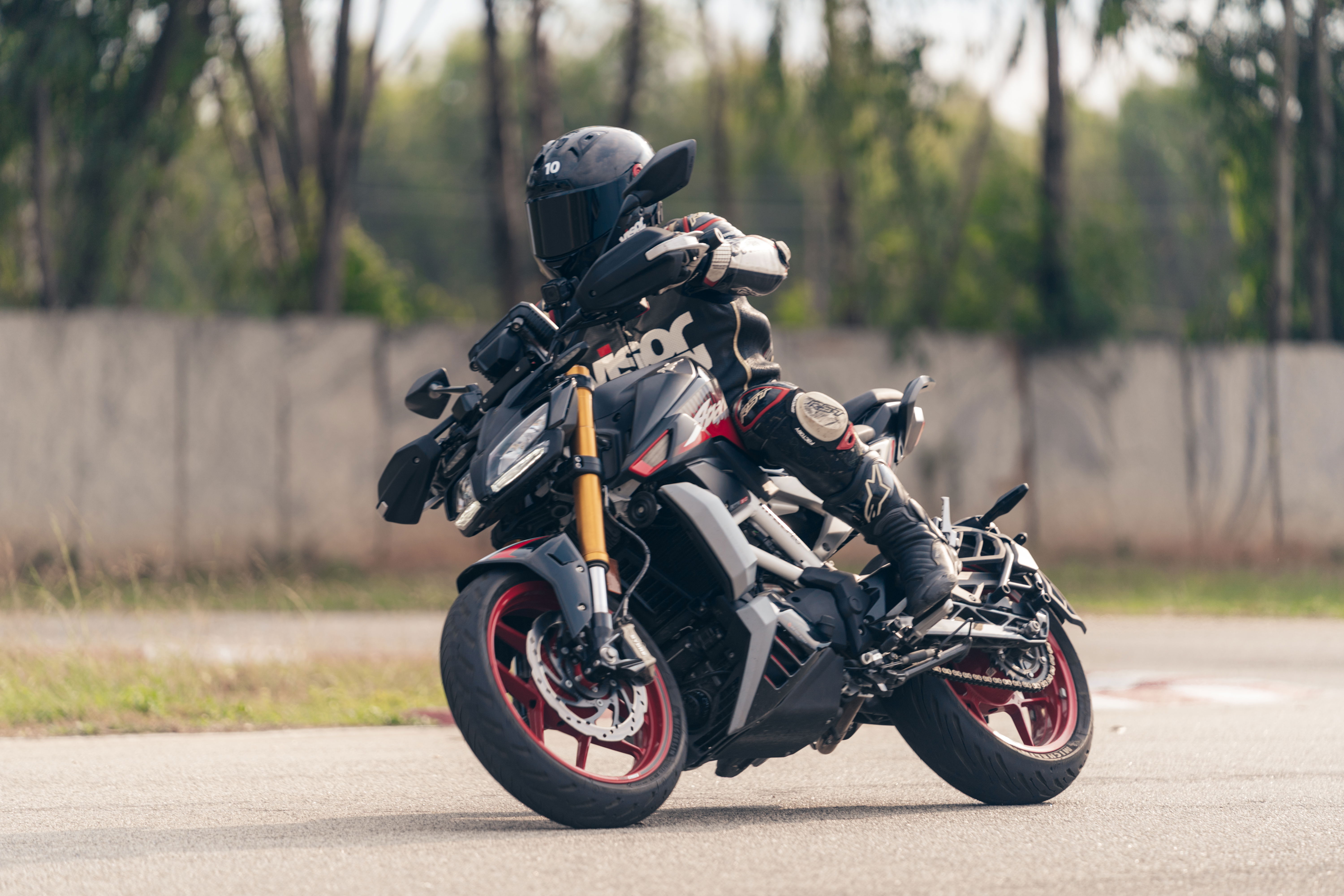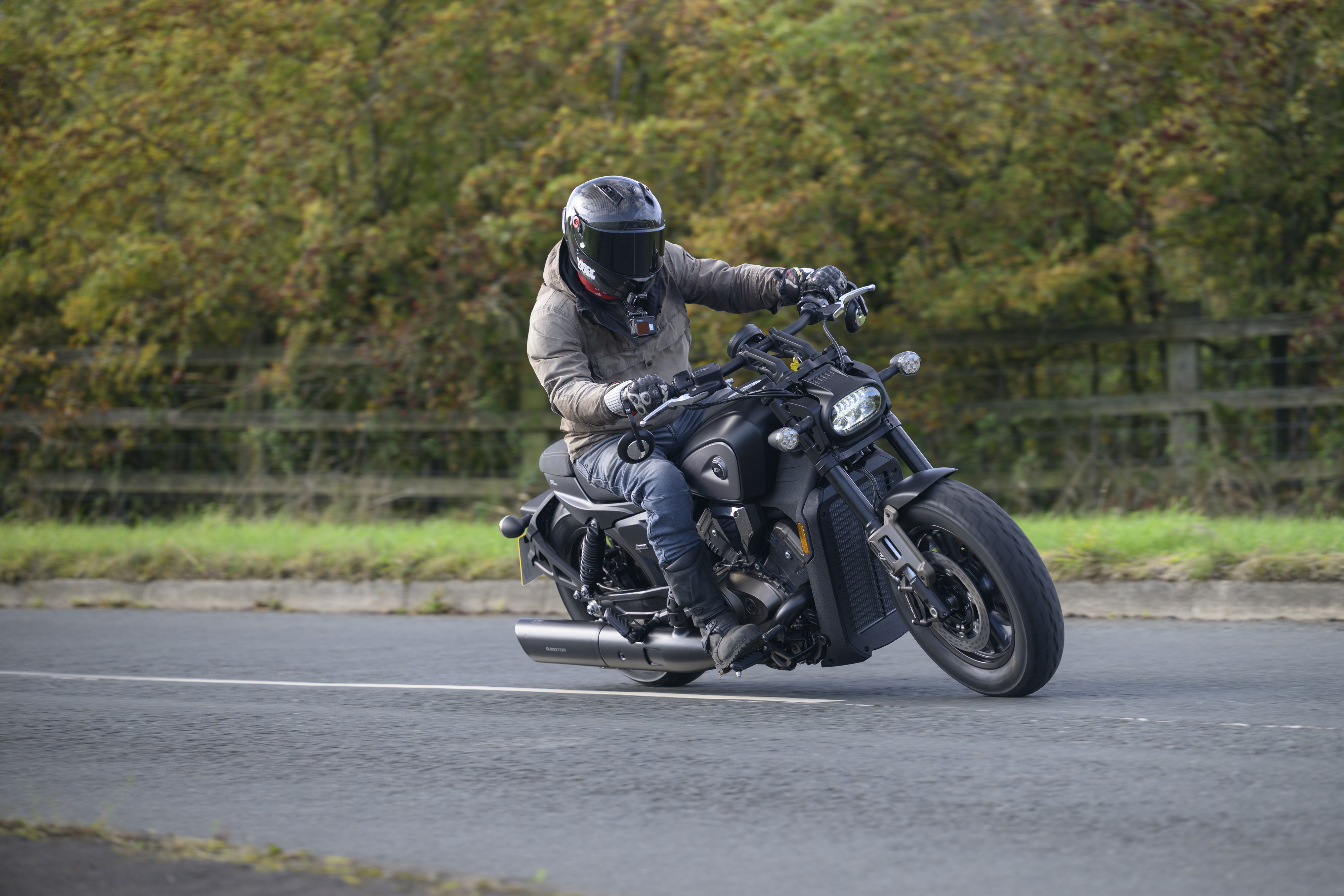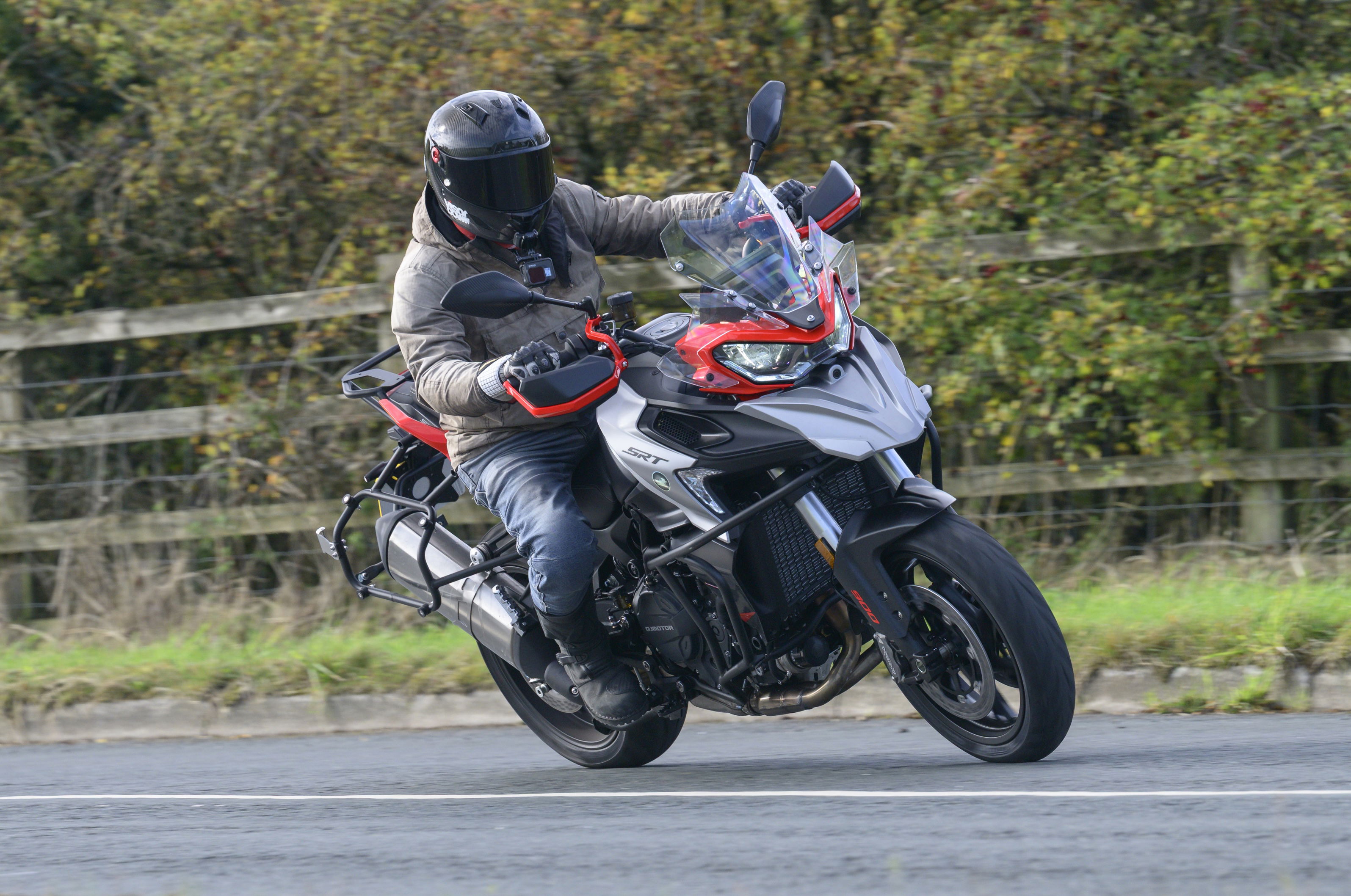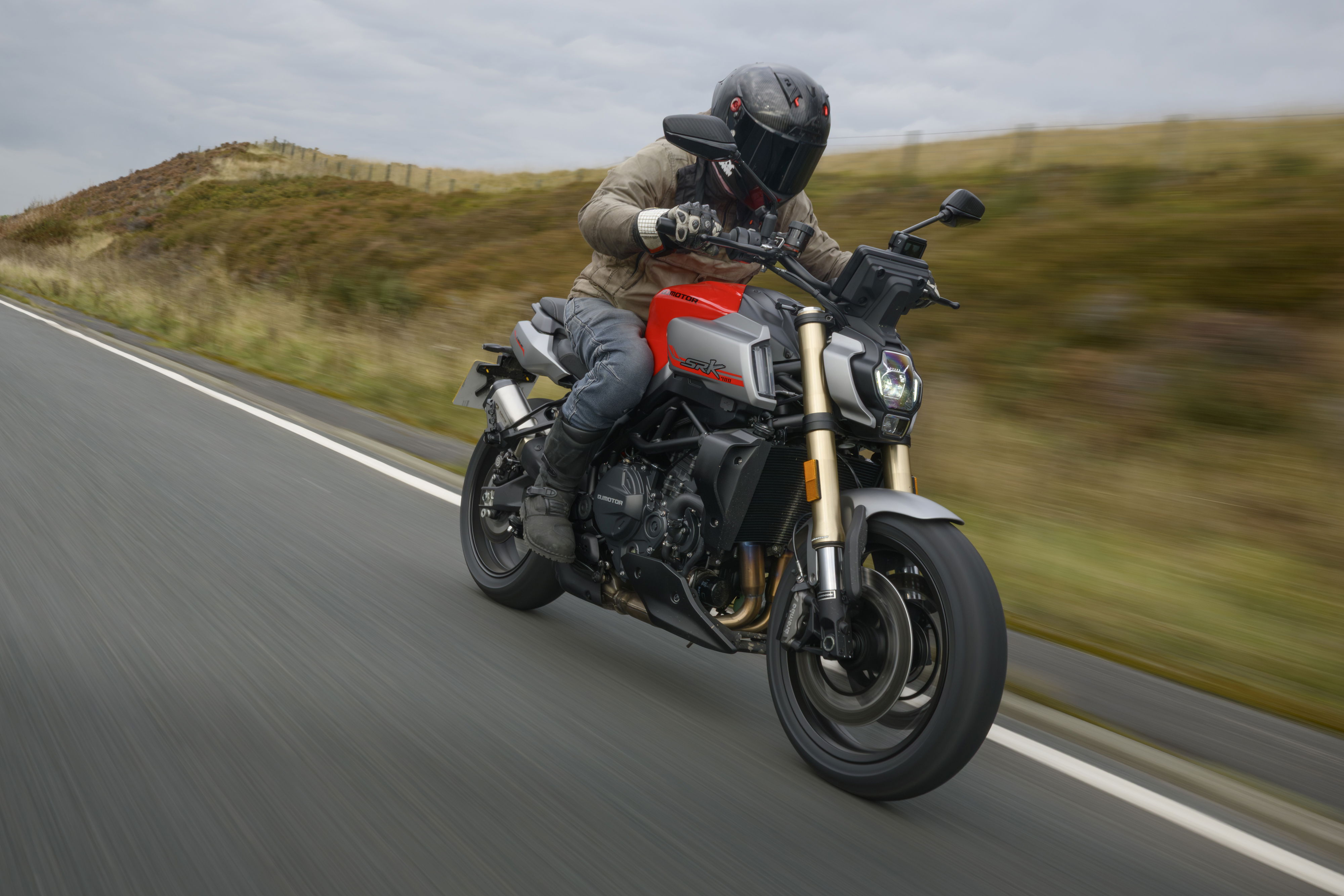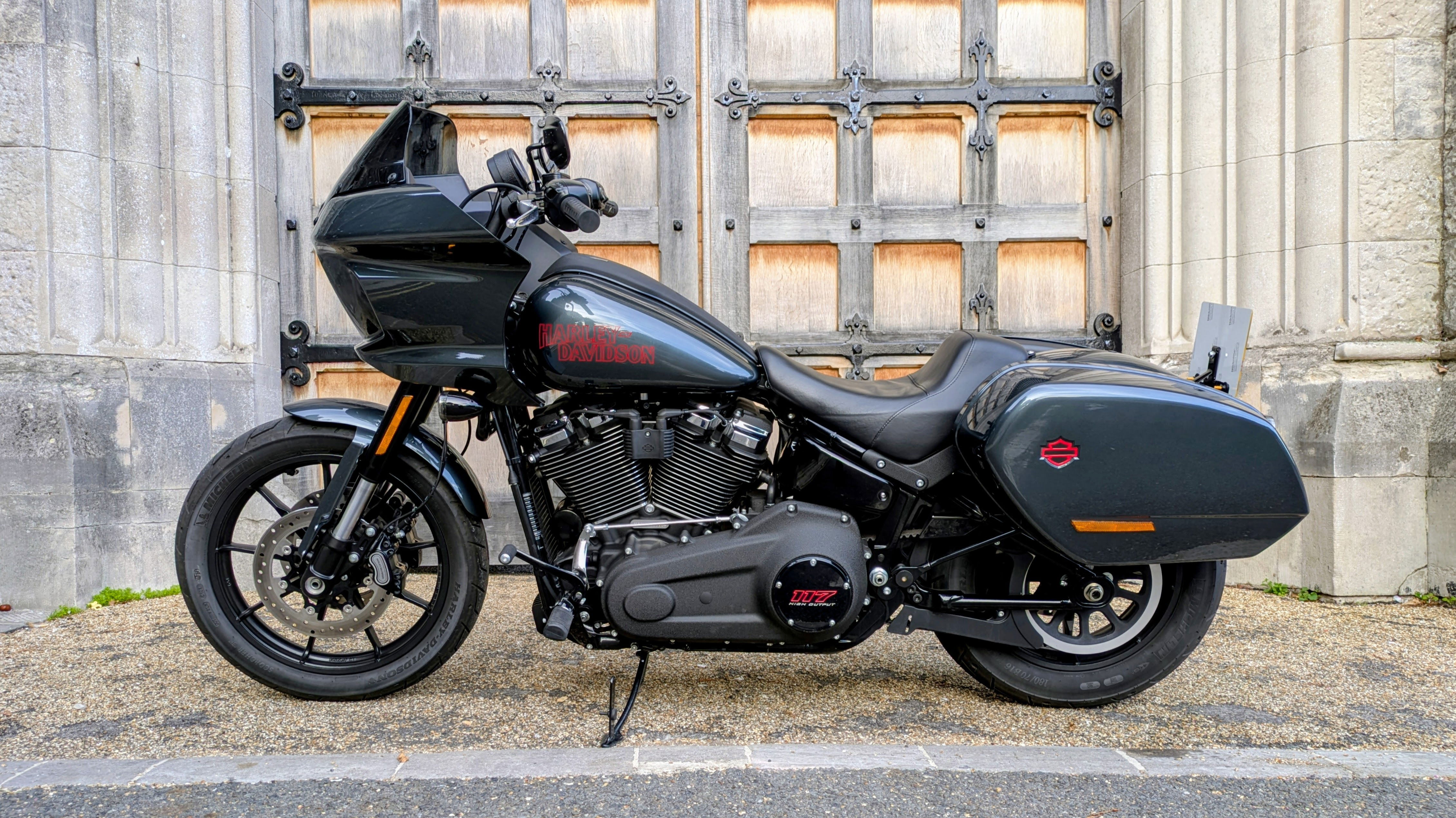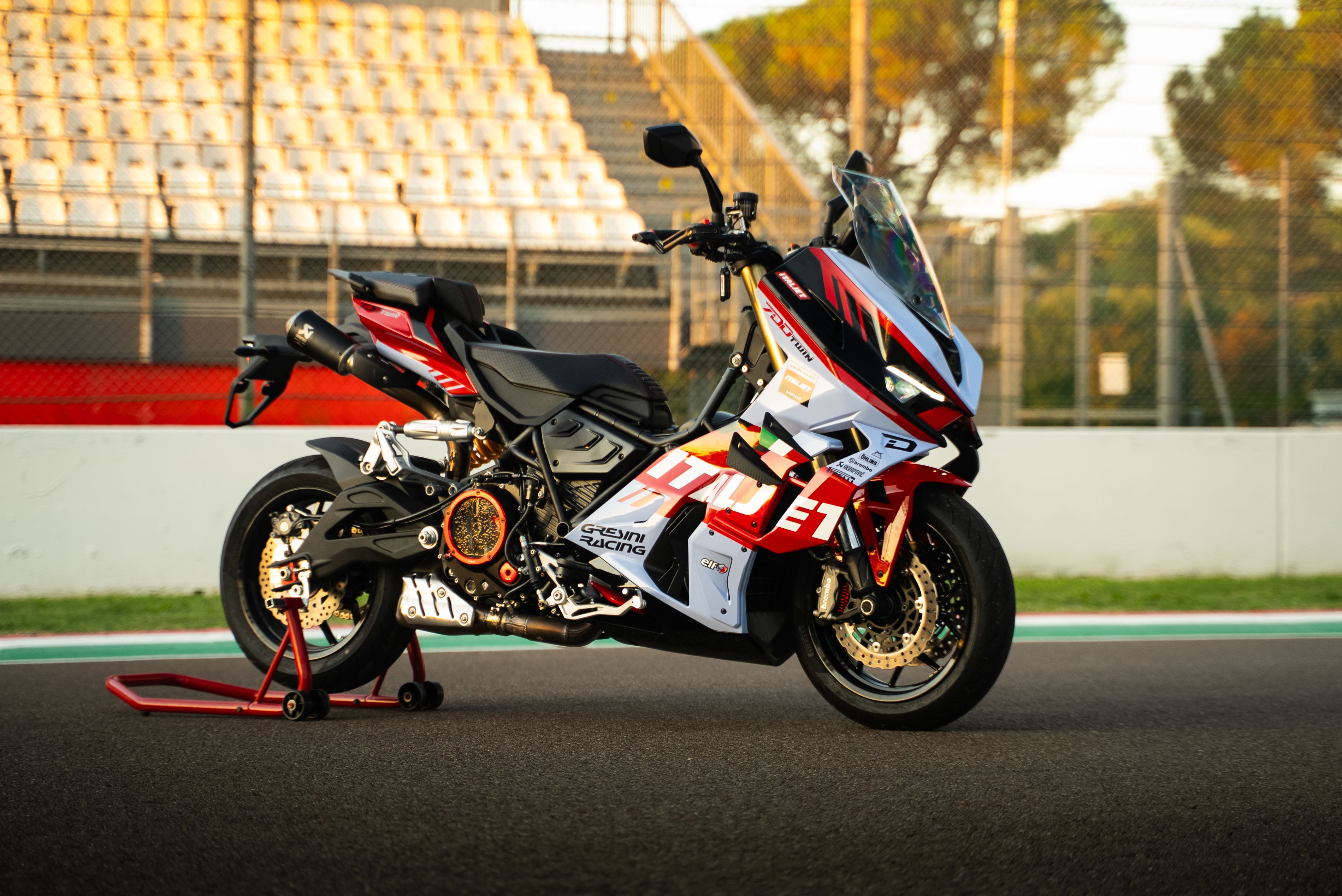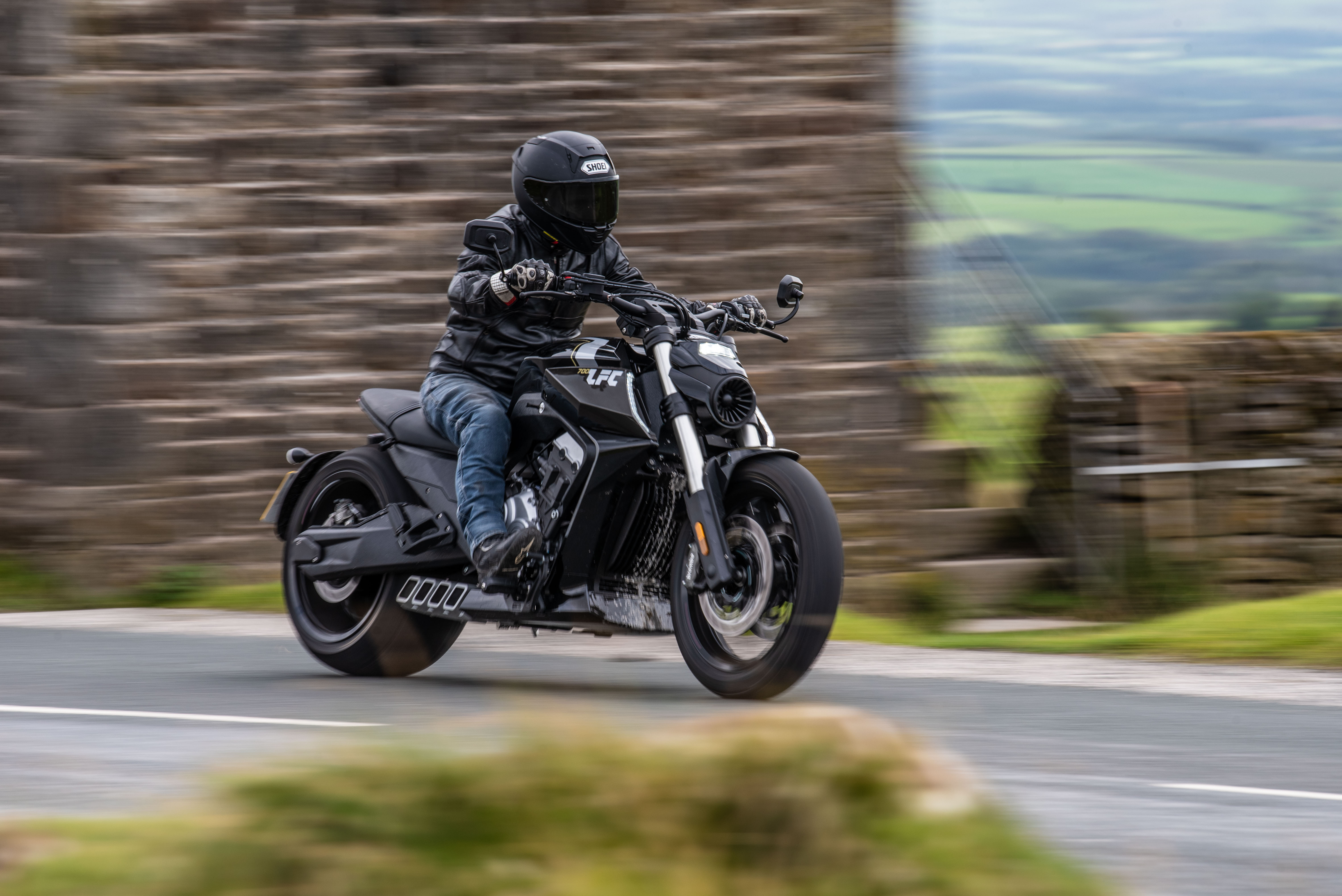Road Test: Ducati Sport 1000 vs. Triumph Thruxton
New dogs, old tricks. Does a factory retro sit well in the modern garage?

Old's cool, there is no denying it. Whether it be the kitsch retro kit from yesteryear such as the Raleigh Chopper, original Star Wars figures or lava lamp, what's been around comes around again. And when it does it inherits a certain cool-factor, often more than it had the first time around. Did any adults seriously ride a Raleigh Chopper in the 1970s? Not a chance, but the majority of 'new' Chopper buyers are thirty-something's reliving their youth through modern reproductions.
Which brings them onto a collision course with the purists. Should retro gear be reproduced? Purists will shudder at the thought of a modern copy of a classic design, mumble under their breath about it 'never being as good as the original' and 'cheap imitations cashing in on the name.' But does this matter? Who really cares that the new Beetle is little more than a Golf with a funny body bolted on, that the new Chopper doesn't have a central gear stick or that Luke Starwalker appears to have hit the steroids in the twenty-odd years between the new and old model? What matters is that these new objects bring pleasure to their owners, and often even introduce a whole new generation to the delights of another time.
Which brings us to these two bikes, Triumph's Thruxton and Ducati's new Sportclassic Sport 1000, both unashamed reproductions of classic models from glory years. The Thruxton was Triumph's race replica of its day, much like the CBR600RR of today. Although in its rarity the original Thruxton was much more like a Yamaha R7 or Honda RC30 than the common CBR. It was a bike designed to win races, which it did, and was a major player in making the Triumph name a force to be reckoned with in the 1970s.
Ducati's 750 Sport was a similar story in Europe. Designed to sell as a road going replica of the Ducati Paul Smart rode to victory in the 1972 Imola 200 Miles it also sporned a racing version. Although only 402 Ducati 750SS (or green frames as they were commonly called due to their, um, green frames) were made in truth they weren't actually very close to the road going bike. Where the road going bike had a standard valve spring set up the race bike came with a desmodromic head.
History lesson over, if you want to know more then check out the potted history box outs on either bike in this feature. Back to the bikes.
When you stand and look at the Sport 1000 you really do appreciate the effort Ducati has gone into with the bike's styling. History is such a crucial thing within the Ducati brand and family (or Ducatisti as they like to be called) and this is a bike designed with passion by real enthusiasts. It's the small touches that set it aside and turn it from a pretty bike to a stunning one. The twin stacked pipes (although the original has separate megaphones), the old endurance racing styled tank, the retro Ducati logo, the handlebar mirrors and right down to even the tyres, which are modern rubber cut to look like 'Phantom' tyres of old.
In comparison the Thruxton seems a bit of a cheat. The teardrop tank is the same as the Bonneville's and not like the original's endurance one, and while it does have a seat in the style of the Thruxton's race unit it's a plastic cover over a normal saddle rather than a proper single seat like the Sport 1000. To be fair this makes it a fair sight more practical, but all the same there is something intrinsically cool about a proper single seat. Side by side with the Sportclassic the Thruxton has a look of a bike created with a few add-ons rather than a special, unique model like the Sport 1000.
Start them up and the Triumph disappoints again. Although it looks mean the sound from the exhaust pipe and engine is anything but. The twin megaphone silencers promise a cacophony of noise but deliver a silent symphony while the engine gently whirs and whistles rather then thumps and growls.
Fire up the Sport 1000 and you are greeted with a much more pleasing note. The exhaust is still a silent whisper but the engine has a satisfying rattle from the dry clutch that instantly reminds you of the brand of bike you are riding. As does actual clutch mechanism.
Like all Ducati's over 800cc the clutch on the Sport 1000 feels like you are trying to pull apart the engine cases. Any kind of town riding is a matter of getting the whole clutch useage thing over and done with as soon as possible and sitting at traffic lights with the clutch pulled in is a definite no no, not helped by a fairly radical riding position.
Having spent a while riding the Sport 1000 I had to check with Niall because I'm convinced the riding position is more extreme than modern supersport 600s. In the end we both decided that there wasn't much in it but if your back and wrists are a bit on the iffy side then the Sport 1000 won't do it any favours through town. Especially if the traffic lights aren't in your favour.
In contrast the Thruxton is a bike designed for day-to-day use. Although the riding position is race inspired the bars are far higher than the Ducati's and the clutch considerable lighter. Apart from the occasional screech from the clutch after a speedy get a way the Thruxton is fairly at home through traffic, and it's mirrors don't make it the same width as your average bus. Beautiful as they are, and extremely effective at showing what's behind, the Sport 1000's mirrors do add nearly a foot to the width of the bike, which isn't very helpful for commuting. Our advice? Junk them, the bike looks really good without them.
Now here is the real quandary with the Sport 1000. Because it's such a stunning bike to look at you want everyone to see you riding it and appreciate its looks. But you really don't want to spend time on it in busy populated areas because of the lack of comfort. With a Sport 1000 you have to learn to be selfish. Ducati has even shown you the way by taking away the inconvenience of a pillion seat. The Ducati is a bike to be savoured alone, away from traffic, away from the hustle and bustle of town and away from any distractions. Take the Sport 1000 to a clear, twisty road, and you can enter a world of pleasure because while it looks retro, in reality the Sport 1000 is anything but.
It's the Holy Grail of the whole retro bike world. How do you make a bike that looks retro yet handles like a modern bike? Well Ducati has cracked it with the Sportclassic. In corners the Sport 1000 inspires every bit as much confidence as a modern sports bike, which it should do really considering it has modern rubber, inverted forks and a stiff trellis chassis. From the outside it may look like a retro bike, but this really is a wolf in sheep's clothing. And then there's the engine.
The 1000cc air-cooled engine manages to tick all the right boxes, looks and performancewsie. Visually the big twin is unmistakably a Ducati with its L shape and cam belt covers but as it remains an air-cooled motor it really could be from any era post-1971. If you squint and ignore little things like fuel injection that is. But while its look is from the '70s the performance is bang up to date.
With the possible exception of the very latest 999 engine this air-cooled 1000 is probably the best motor in Ducati's range, which is why it pops up in so many other bikes from Monsters to Multistradas and even Bimotas. From low down to the rev limiter the power is delivered in a beautifully smooth spread while retaining enough vibrations and engine noises to keep your sense aroused.
Getting off the Ducati and onto the Triumph this passion is instantly doused. Triumph had made an effort to give the Thruxton a bit of engine character by altering the crank to a 360-degree firing interval over the Bonneville Scrambler's 270-degree but it's all a bit muted. There's no thrill or excitement hinting at a racy past and where the Sport 1000 makes genuine rapid progress the Thruxton just ambles behind. It's easy going enough, which is all very well if that's what you are after, but just lacks any kind of thrill factor.
And then there's the handling. As long as you don't want to do anything in a hurry the handling is ok, but only just ok. It's a bike for leisurely rides that has no real interest in going fast, a complete contrast to its name's heritage. The suspension is soft, the single front brake lacks any kind of feel and the skinny tyres don't inspire an awful lot of confidence. Potter around looking good and enjoying life and the Thruxton is the perfect antidote to a stressful day or nagging wife, up the pace and the fun soon disappears.
And this is the real contrast between these two bikes, one is still a serious sports tool, the other a bike designed to look faster than it actually is. Something that's down to their genes.
Despite being through some fairly turbulent times financially the Ducati factory has remained firmly rooted in Bologna, its historic home. The factory has a museum there with all of the significant models kept in pristine working condition by enthusiastic curators. Everyone who works in the factory knows, lives and breaths Ducatis. For many involved with the company it is more than a job, it's a life.
Triumph's history is slightly different. In its heyday the factory at Meriden was the envy of the bike world with iconic bikes such as the Bonneville and Tiger Cub, but then the hard times hit and in 1983 Triumph went into liquidation, the Meriden factory was demolished and a housing estate built on its site. The actual Triumph name, however, and manufacturing rights lived on and was bought by property developer John Bloor.
Seven years later, in 1990, a new generation of Triumph motorcycles was launched at the Cologne Motorcycles show. Built in Hinckley these Triumphs were the shape of things to come. They were Bloor's Triumphs.
This is by no means a dig at either the current crop of Triumph motorcycles or John Bloor himself, who has to take credit for turning Triumph around and making it the success it is today, but really pointing out the differences in the history of the Ducati and Triumph brand. The current Triumph models are a new generation of Triumphs, so their genes are different to the bikes of the Meriden factory. The new generation of Bonnevilles are easy going bikes aimed at people who remember the good old days and want something that looks like a classic but will start everyday, not leak oil and look good. Which the Thruxton does. They are not the race replicas of old. The Thruxton is designed to be a good looking retro styled bike that is a Thruxton only in name and some styling cues. The Ducati Sport 1000 is designed to retain a bit of the fire of old.
So are these two bikes pieces of nostalgia that are worth buying into? Yes, but both for very different reasons.
If you remember the Thruxton days of old, like the look of the new bike and are at the age or temperament where going fast is no longer an issue and you want a bike to cruise around on and enjoy the summer then the Triumph is certainly an option. The handling is fine up to a point, it's fairly practical, it looks good and at just under £6000 isn't badly price. Just don't expect too many thrills, sit back and enjoy the ride.
If, on the other hand, you want a retro with a kick, stunning styling and excellent handling to take out at the weekend and forget all about the humdrum of modern life then the Sport 1000 is a great option. Yes, it is seriously flawed when it comes to commuting, but who cares? Get out there and enjoy the freedom of two wheels on your own.
At the end of the day does it really matter if you are riding a copy of something old? Does it really matter if someone who happens to remember a bike from 30 years ago looks down their nose at you? Not at all. The important thing is that you are riding a bike that inspires you, tugs on a heart string and makes you smile. That's what nostalgia is all about, a memory from yesteryear that brings back the good times. If either of these bikes does that for you then that's good enough reason to get out there and ride one. Enjoy them while you still can.
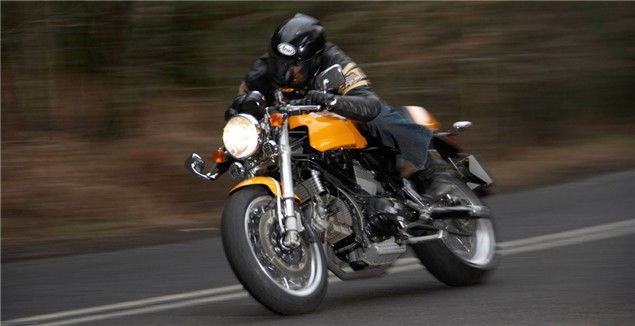
New dogs, old tricks. Does a factory retro sit well in the modern garage
OLD'S COOL, there is no denying it. Whether it be the kitsch retro kit from yesteryear such as the Raleigh Chopper, original Star Wars figures or lava lamp, what's been around comes around again. And when it does it inherits a certain cool-factor, often more than it had the first time around. Did any adults seriously ride a Raleigh Chopper in the 1970s? Not a chance, but the majority of 'new' Chopper buyers are thirty-something's reliving their youth through modern reproductions.
Which brings them onto a collision course with the purists. Should retro gear be reproduced? Purists will shudder at the thought of a modern copy of a classic design, mumble under their breath about it 'never being as good as the original' and 'cheap imitations cashing in on the name.' But does this matter? Who really cares that the new Beetle is little more than a Golf with a funny body bolted on, that the new Chopper doesn't have a central gear stick or that Luke Starwalker appears to have hit the steroids in the twenty-odd years between the new and old model? What matters is that these new objects bring pleasure to their owners, and often even introduce a whole new generation to the delights of another time.
Which brings us to these two bikes, Triumph's Thruxton and Ducati's new Sportclassic Sport 1000, both unashamed reproductions of classic models from glory years. The Thruxton was Triumph's race replica of its day, much like the CBR600RR of today. Although in its rarity the original Thruxton was much more like a Yamaha R7 or Honda RC30 than the common CBR. It was a bike designed to win races, which it did, and was a major player in making the Triumph name a force to be reckoned with in the 1970s.
Ducati's 750 Sport was a similar story in Europe. Designed to sell as a road going replica of the Ducati Paul Smart rode to victory in the 1972 Imola 200 Miles it also sporned a racing version. Although only 402 Ducati 750SS (or green frames as they were commonly called due to their, um, green frames) were made in truth they weren't actually very close to the road going bike. Where the road going bike had a standard valve spring set up the race bike came with a desmodromic head.
When you stand and look at the Sport 1000 you really do appreciate the effort Ducati has gone into with the bike's styling. History is such a crucial thing within the Ducati brand and family (or Ducatisti as they like to be called) and this is a bike designed with passion by real enthusiasts. It's the small touches that set it aside and turn it from a pretty bike to a stunning one. The twin stacked pipes (although the original has separate megaphones), the old endurance racing styled tank, the retro Ducati logo, the handlebar mirrors and right down to even the tyres, which are modern rubber cut to look like 'Phantom' tyres of old.
In comparison the Thruxton seems a bit of a cheat. The teardrop tank is the same as the Bonneville's and not like the original's endurance one, and while it does have a seat in the style of the Thruxton's race unit it's a plastic cover over a normal saddle rather than a proper single seat like the Sport 1000. To be fair this makes it a fair sight more practical, but all the same there is something intrinsically cool about a proper single seat. Side by side with the Sportclassic the Thruxton has a look of a bike created with a few add-ons rather than a special, unique model like the Sport 1000.
Start them up and the Triumph disappoints again. Although it looks mean the sound from the exhaust pipe and engine is anything but. The twin megaphone silencers promise a cacophony of noise but deliver a silent symphony while the engine gently whirs and whistles rather then thumps and growls.
Fire up the Sport 1000 and you are greeted with a much more pleasing note. The exhaust is still a silent whisper but the engine has a satisfying rattle from the dry clutch that instantly reminds you of the brand of bike you are riding. As does actual clutch mechanism.
Like all Ducati's over 800cc the clutch on the Sport 1000 feels like you are trying to pull apart the engine cases. Any kind of town riding is a matter of getting the whole clutch useage thing over and done with as soon as possible and sitting at traffic lights with the clutch pulled in is a definite no no, not helped by a fairly radical riding position.
Having spent a while riding the Sport 1000 I had to check with Niall because I'm convinced the riding position is more extreme than modern supersport 600s. In the end we both decided that there wasn't much in it but if your back and wrists are a bit on the iffy side then the Sport 1000 won't do it any favours through town. Especially if the traffic lights aren't in your favour.
In contrast the Thruxton is a bike designed for day-to-day use. Although the riding position is race inspired the bars are far higher than the Ducati's and the clutch considerable lighter. Apart from the occasional screech from the clutch after a speedy get a way the Thruxton is fairly at home through traffic, and it's mirrors don't make it the same width as your average bus. Beautiful as they are, and extremely effective at showing what's behind, the Sport 1000's mirrors do add nearly a foot to the width of the bike, which isn't very helpful for commuting. Our advice? Junk them, the bike looks really good without them.
Now here is the real quandary with the Sport 1000. Because it's such a stunning bike to look at you want everyone to see you riding it and appreciate its looks. But you really don't want to spend time on it in busy populated areas because of the lack of comfort. With a Sport 1000 you have to learn to be selfish. Ducati has even shown you the way by taking away the inconvenience of a pillion seat. The Ducati is a bike to be savoured alone, away from traffic, away from the hustle and bustle of town and away from any distractions. Take the Sport 1000 to a clear, twisty road, and you can enter a world of pleasure because while it looks retro, in reality the Sport 1000 is anything but.
It's the Holy Grail of the whole retro bike world. How do you make a bike that looks retro yet handles like a modern bike? Well Ducati has cracked it with the Sportclassic. In corners the Sport 1000 inspires every bit as much confidence as a modern sports bike, which it should do really considering it has modern rubber, inverted forks and a stiff trellis chassis. From the outside it may look like a retro bike, but this really is a wolf in sheep's clothing. And then there's the engine.



